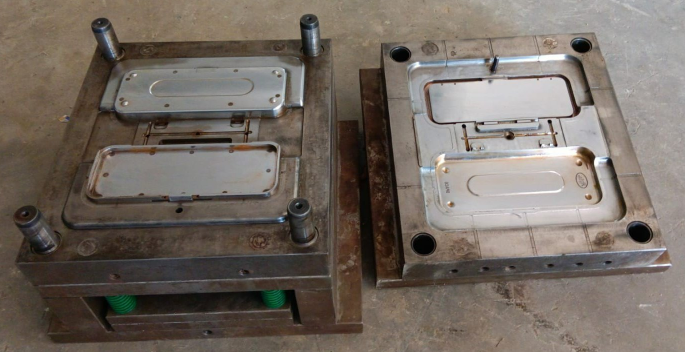Understanding the Concept and Applications of Overmold in English
Overmolding is a manufacturing process that involves the application of a second layer of material over an existing component or part. This technique creates a strong, durable, and aesthetically pleasing product that provides additional functionality and protection. In this article, we will delve into the concept of overmolding and explore its various applications in different industries.
The process of overmolding begins with the selection of a base material, often a rigid plastic or metal, which serves as the foundation for the final product. This base component is then placed into a mold cavity, and a second material, usually a soft thermoplastic elastomer (TPE), is injected or molded over it. The two materials bond together, creating a single integrated part.
One of the primary advantages of overmolding is its ability to enhance the product\’s functionality and ergonomics. By adding a soft, tactile layer on top of a rigid base, overmolding improves the grip and comfort of products such as handles, grips, and medical devices. This additional layer also provides cushioning and shock absorption, making overmolded products more suitable for impact or vibration-prone applications.
Overmolding also offers excellent sealing properties, making it an ideal choice for creating watertight or airtight products. The overmolded layer acts as a barrier, preventing the ingress of moisture, dust, or other contaminants into the product. This feature is particularly beneficial in industries like automotive, electronics, and medical, where the protection of sensitive components from external elements is crucial.
The aesthetic appeal of overmolded products should not be underestimated. The ability to combine different colors, textures, and materials allows manufacturers to create visually appealing and brand-differentiating products. Overmolding offers endless possibilities for customization, enabling companies to design products that align with their brand identity and meet the preferences of their target market.
In the automotive industry, overmolding is extensively used for the production of key fobs, steering wheels, and interior trim components. The soft TPE layer enhances the user experience by providing a comfortable and slip-resistant grip. Additionally, overmolding allows for the integration of buttons, symbols, and logos within the mold, eliminating the need for separate labeling or engraving processes.
Electronics manufacturers also benefit from overmolding technology. Overmolded cables and connectors offer improved strain relief, protecting the delicate wires and terminals from excessive bending or pulling. The soft TPE layer also adds durability and flexibility to the product, reducing the risk of cable breakage or connector damage. Moreover, overmolding can be utilized for adding insulation, reducing noise, and improving the overall reliability of electronic devices.

Medical devices are another area where overmolding finds extensive application. Overmolded handles for surgical instruments provide a secure and comfortable grip, enabling precise control during procedures. The soft TPE layer also offers antimicrobial properties, helping to prevent the growth and spread of bacteria within the medical environment. Overmolding is also used in prosthetics, orthopedic devices, and dental tools to enhance patient comfort and improve device functionality.
Overmolding is a versatile manufacturing technique that offers numerous benefits in terms of functionality, protection, aesthetics, and customization. From automotive components to electronics and medical devices, the applications of overmolding are vast and diverse. By understanding the concept and potential of overmolded products, manufacturers can harness this technology to create innovative and superior-quality products that meet the evolving needs of consumers.
Previous:Advancements and Innovations in Plastic Injection Molding
Next: Exploring the World of Automotive Mold: Advancements and Innovations
-
Medical Molding Parts: Precision and Quality for Healthcare Products
2023-4-26
Medical molding parts are a crucial component in the healthcare industry, providing precision and quality in the product...
View details -
Designing a High-Quality Plastic Injection Crate Mold for Improved Productivity and Efficiency
2023-6-19
Plastic injection molding has been one of the most popular manufacturing processes for producing plastic products. It of...
View details -
Plastic box mold injection molding, excellent quality creates the future
2024-4-19
In today's wave of industrial production, plastic box mold injection molding, with its excellent quality and innovative ...
View details -
China Designing and Manufacturing a High-Quality Plastic Big Crate Mould
2023-7-16
Introduction Plastic big crates are essential items for industries such as logistics, warehousing, and transportation. T...
View details -
Top-Notch English Injection Molds for Chair Manufacturing
2023-8-25
Injection molding is a widely used manufacturing process in the production of various products, including chairs. It inv...
View details -
Injection mold manufacturers tell you how to choose mold materials and how to control tolerances
2022-9-13
More and more enterprises choose mold manufacturing, which can be mass-produced. How to control the tolerance of plastic...
View details







